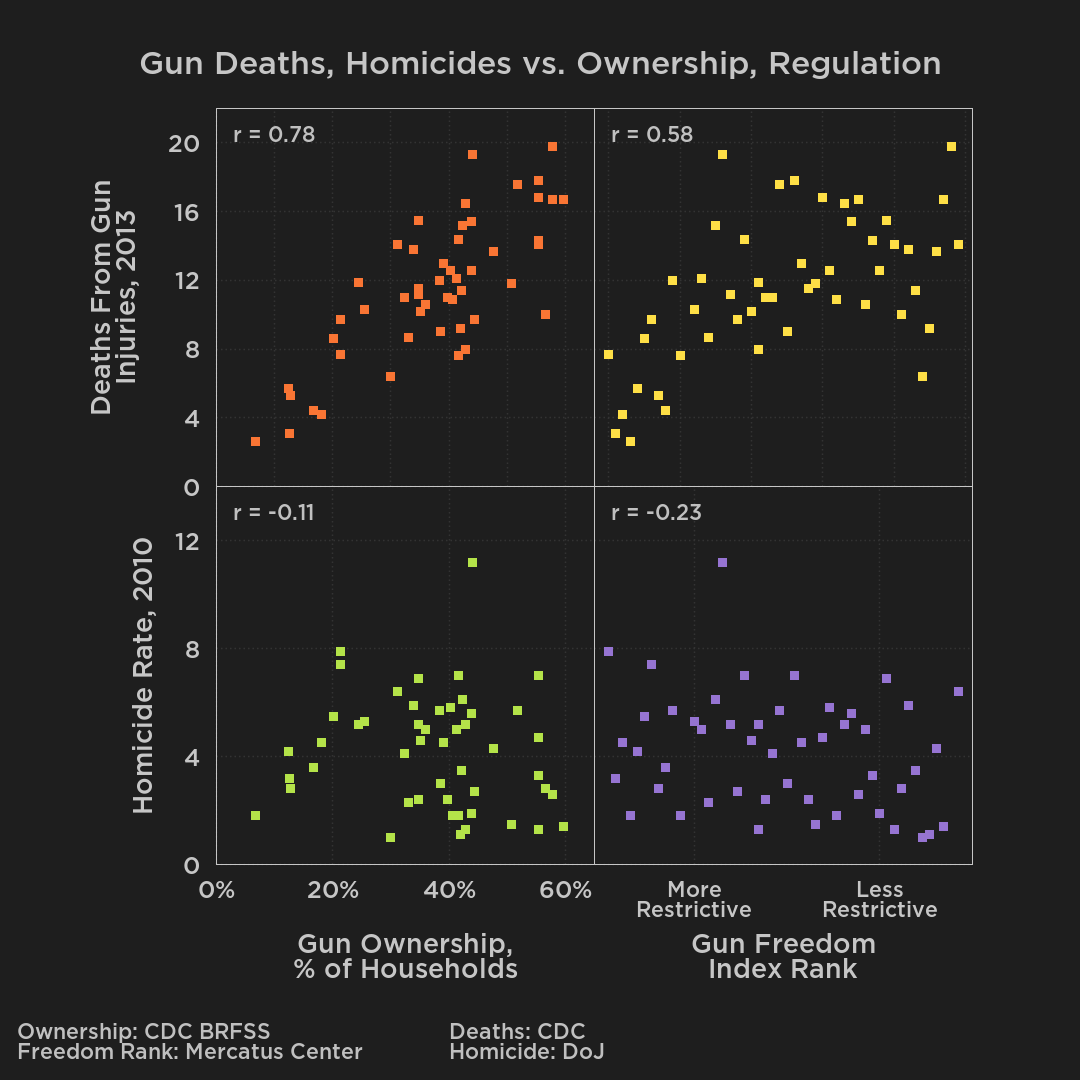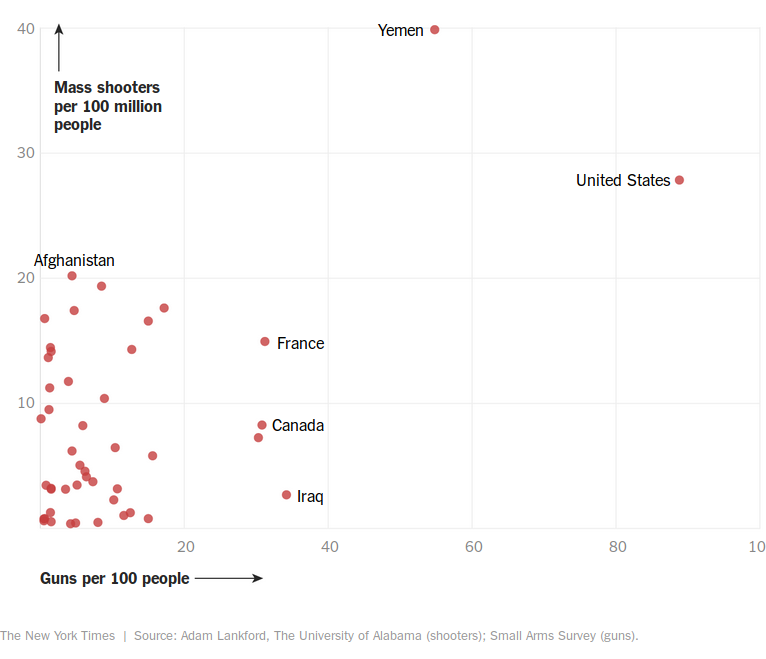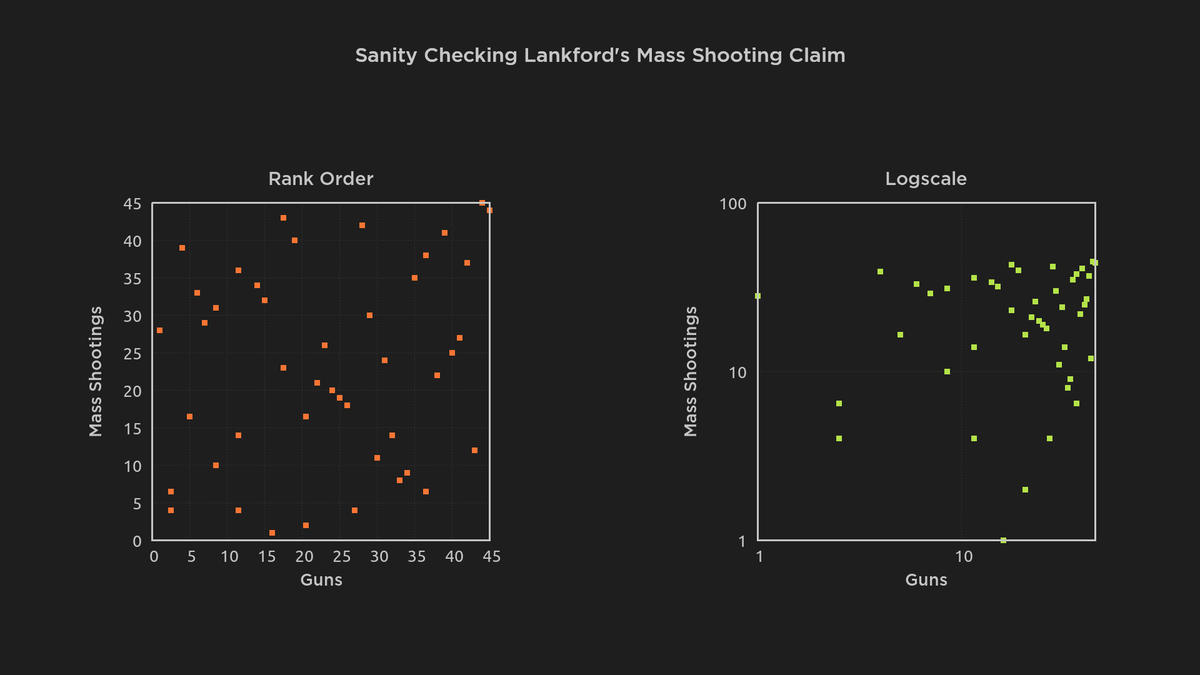"Gun deaths" are correlated with guns because of higher suicide rates. Homicide alone does *not* correlate.
Fisher cited a handful of such "gun death" metrics in a paragraph explicitly about "murder".

The only glimpse we get of his secret dataset is this scatterplot:

Contrary to Lankford's claims, the correlation doesn't hold when using simple statistical checks for outliers (rank order, logscale)











